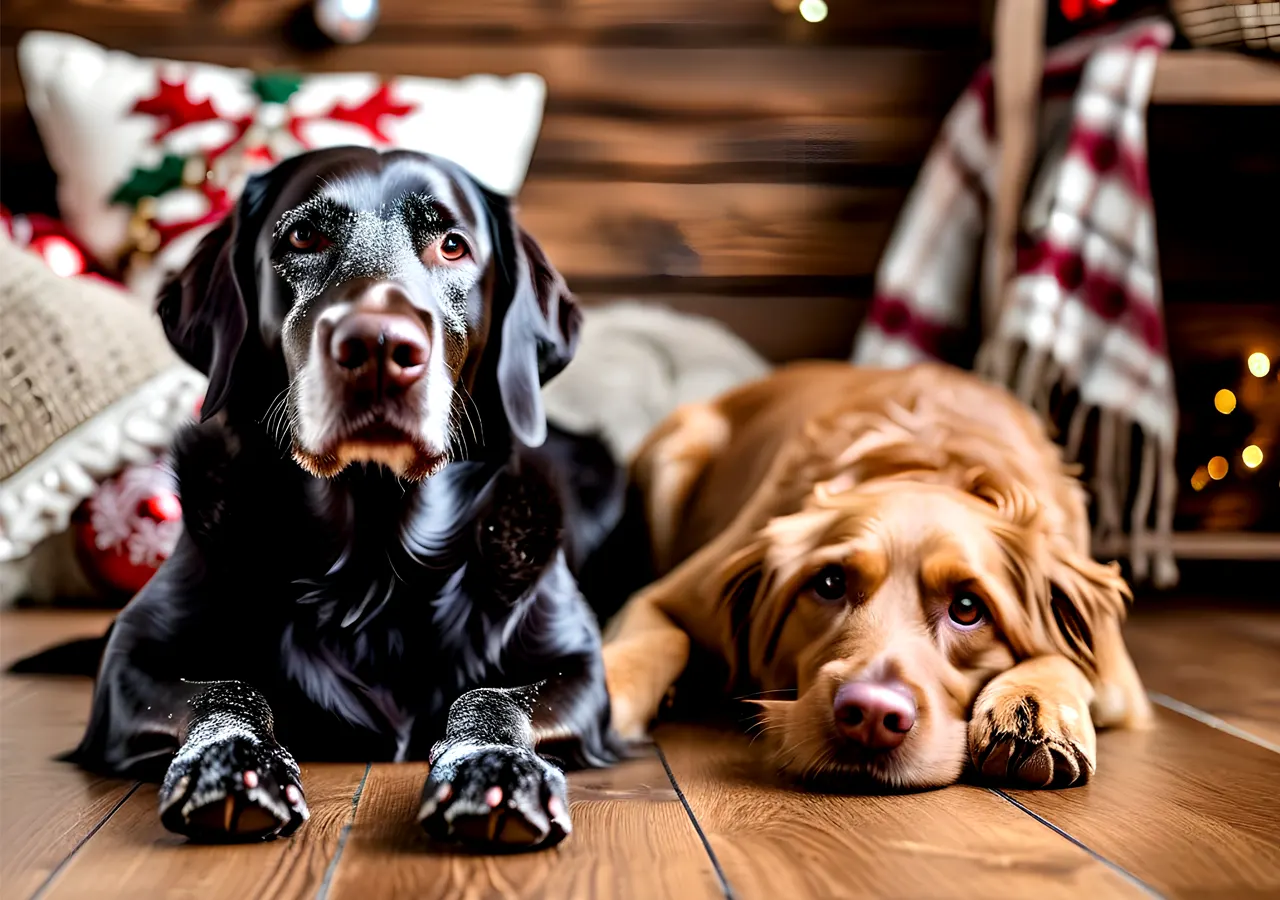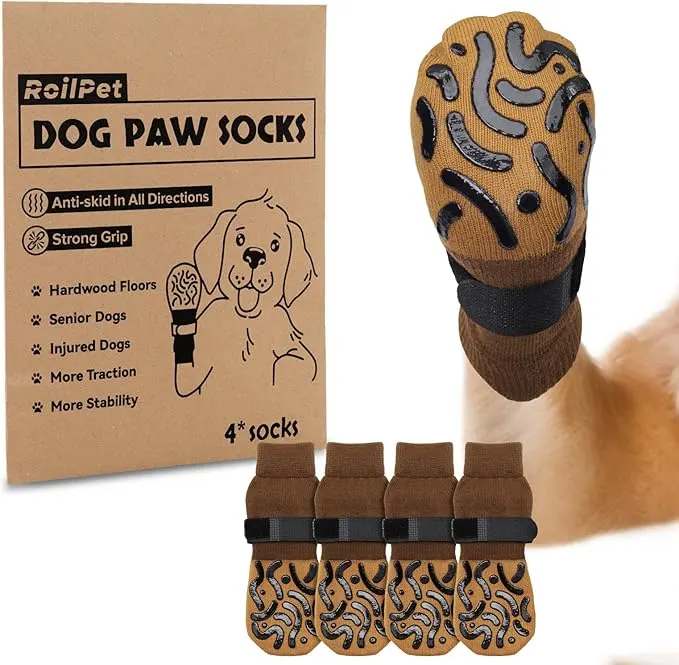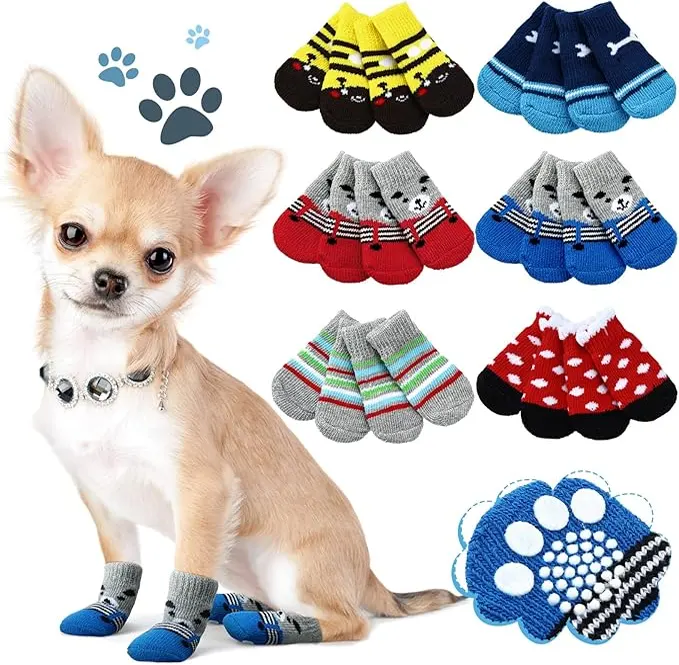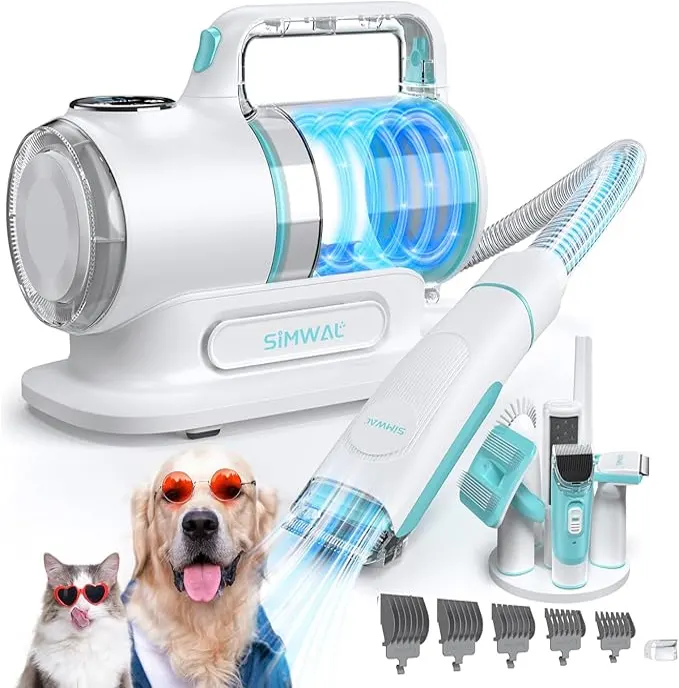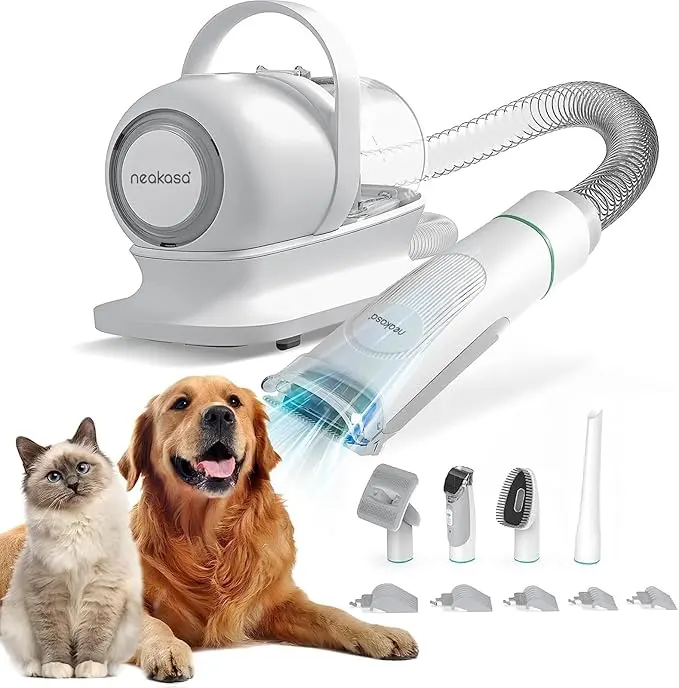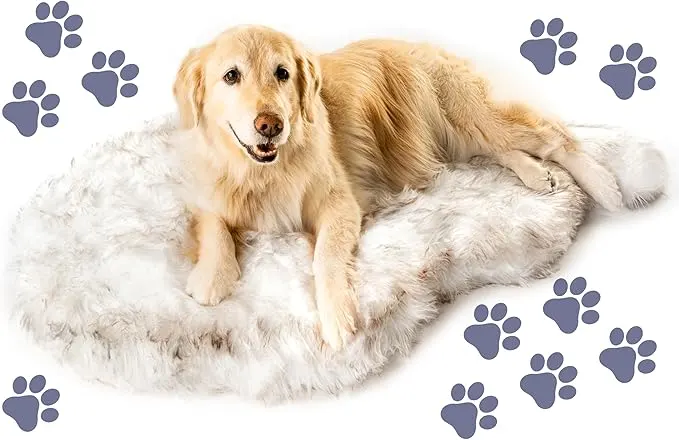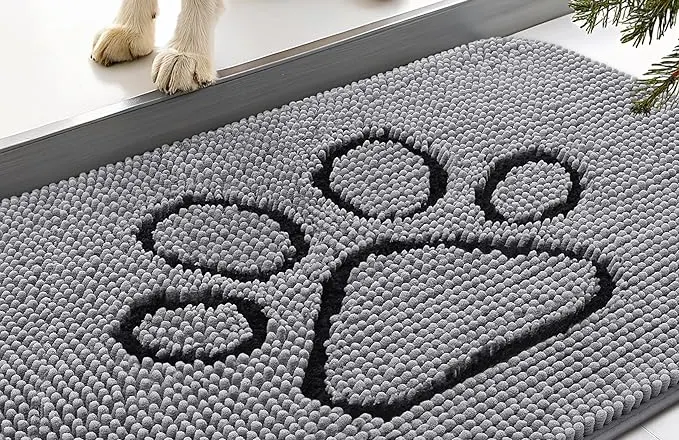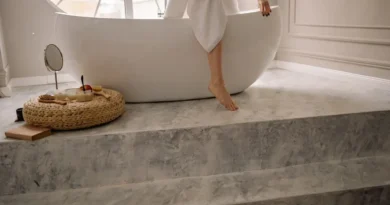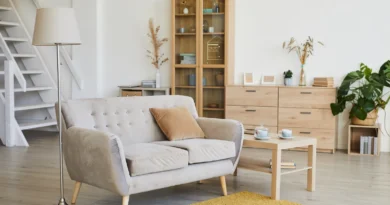Best Pet-Friendly Flooring for Homes with Dogs – Durable and Easy to Maintain
If you have a dog, your floor is more than just a surface it’s a racetrack, playground, and sometimes even a cozy nap spot. But while your dog enjoys their little world, you’re probably wondering: will the floor survive the claws, dirt, and occasional “mishap”?
Choosing the right floor for a dog-friendly home means finding the perfect balance between durability, ease of maintenance, safety, and aesthetics. Each material has its pros and cons, and your choice depends on whether you prioritize style, longevity, or your pet’s comfort.
Table of Contents
How to Choose Floors for a Dog-Friendly Home: Tailoring the Choice to Your Dog’s Needs
There’s no one-size-fits-all solution-the ideal floor depends on your lifestyle, your dog’s size and temperament, and the aesthetic you’re aiming for in your home. The key is finding the right balance between style, practicality, and comfort because a happy dog means a happy home.
Every breed has its own specifics, but the most important step in choosing the right floor is to listen to your pet’s needs. Consider their size, activity level, and health and don’t forget that a good floor can be a real investment for your dog’s happy and healthy life.
Vinyl Floors for Dogs: Practical and Durable for Your Home
Modern, waterproof, and wear-resistant, vinyl is often the first choice for dog owners. It’s softer than tiles and laminate, meaning less strain on your dog’s joints, and it comes in a variety of patterns that mimic wood and stone. The only downside? Cheaper models can be too slippery, so it’s best to choose textured options.
Laminate Floors: Elegant but Potentially Slippery for Dogs
Laminate looks like wood, but it’s more affordable and easier to maintain. It’s scratch-resistant, but its slippery surface can be problematic for dogs, especially older ones. If you love laminate, opt for matte finishes and consider adding rugs in key areas.
Tiles and Stone for Dogs: Long-Lasting Materials but Cold on Your Pet’s Paws
These materials are unbeatable when it comes to durability and easy cleaning. No worries about scratches or liquid absorption, but keep in mind they’re hard and cold, which can be uncomfortable for your dog. The solution? Add warm rugs where your pet likes to rest.
Carpets in Homes with Dogs: Comfort with Extra Care for Maintenance
If you want your dog to have a soft, warm surface, carpet is the obvious choice. However, it absorbs odors, traps fur, and can be a cleaning challenge. If you can’t give up carpets, opt for low-pile, washable materials.
Eco-Friendly Floors for Dog Homes: In Harmony with Nature and Your Pet
When choosing floors, you might think about how they affect your home and your dog, but there’s another dimension worth considering ecology. Eco-friendly floors aren’t just a trend, they’re a response to the growing demand for sustainable living. These materials aren’t just good for the planet, they can also benefit your pets.
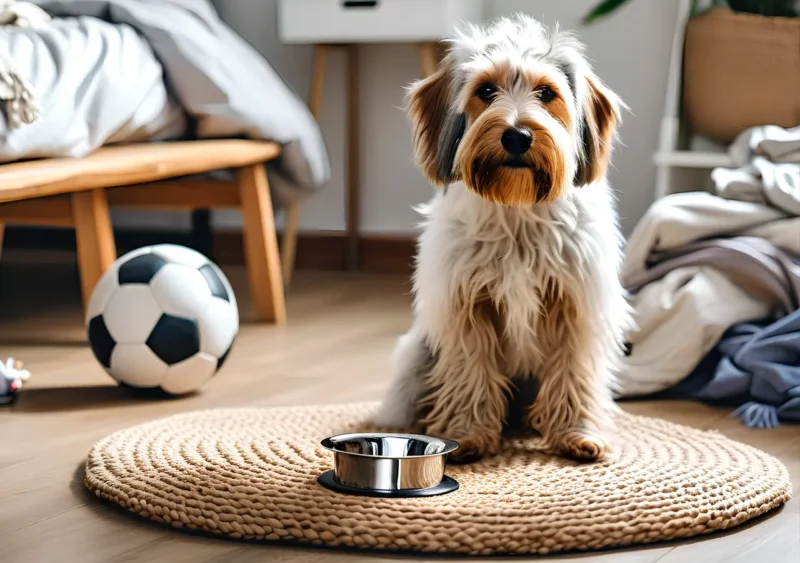
Why Eco-Friendly Floors Are Better for Your Dog? The Benefits of Green Materials
Eco-friendly floors often lack harmful chemicals found in commercial materials, which is better for your pet’s health. Floors made from bamboo, cork, or recycled materials reduce environmental impact and are safer for your dog.
Bamboo Floors: A Natural Option for Dog Homes
Bamboo is one of the most sustainable materials on the market, for many reasons. It grows quickly, is moisture-resistant, and offers a lovely texture that’s pleasant for dog paws. As a flooring option, bamboo is scratch-resistant and easy to maintain. While it might be cooler than wooden floors, adding rugs or mats can increase comfort.
Benefits of Bamboo Floors for Dogs
- Moisture-resistant and durable.
- Easy to clean and maintain.
- Eco-friendly material.
Drawbacks of Bamboo Floors
- Can be slippery, which may be a concern for dogs that run fast.
- Higher initial cost compared to other materials.
Cork Floors: Eco-Friendly, Comfortable, and Safe for Dogs
Cork is another eco-friendly material that’s becoming more popular in modern homes. Its soft, elastic properties provide comfort for your dog, making it a great choice for pets that like to lay on the floor. Additionally, cork is slip-resistant, and maintenance is fairly easy. Cork can be cleaned easily and withstands relatively high temperatures, making it excellent for any room.
Why Choose Cork Floors for Dogs?
- Comfortable for paws, perfect for dogs who love to lie down.
- Eco-friendly, as it’s a completely natural material.
- Easy to maintain and clean.
Drawbacks of Cork Floors
- Can be prone to scratches, especially if your dog has sharp claws.
- Less resistant to heavy impacts, so not ideal for very active dogs.
Recycled Materials: Sustainable and Safe Floors for Dog Homes
Floors made from recycled materials, such as recycled vinyl or even rubber, give you the opportunity to invest in a long-lasting product that doesn’t harm the environment. These materials are often moisture-resistant, easy to maintain, and some even have soundproofing qualities bonus if you have a dog that likes to bark.
Benefits of Recycled Floors for Dogs
- Moisture-resistant and easy to clean.
- Soundproofing is great for a peaceful home environment.
- Eco-friendly and durable material.
Drawbacks of Recycled Floors
- Not all recycled materials are aesthetically pleasing.
- Some types of recycled flooring can be more expensive.
Tips for Maintaining Eco-Friendly Floors in Dog Homes
Maintaining eco-friendly floors isn’t much different from regular floors, but there are a few specific steps to keep in mind. For example, bamboo and cork aren’t immune to direct water exposure, so it’s important to quickly wipe up any spills. If you use recycled materials, regular vacuuming and cleaning with mild, eco-friendly products will help extend their lifespan.
Preventing Slips and Injuries for Dogs on Floors: Safety Tips
There comes a time in every dog owner’s life when they realize their home is not just a place to live it’s also an impromptu racetrack, gym, and occasional skating rink. One moment your dog is casually walking to their water bowl, and the next they’re performing moves worthy of a professional hockey player. Fun? Maybe. Safe? Not at all.
Slippery floors can be a serious issue for dogs, especially for older pets or those with joint problems. But before you think the only solution is to carpet your entire home (or put mini sneakers on your dog), let’s consider how you can reduce the risk of slipping while still keeping your home looking flawless.
Smart Floor Choices for Dogs: How to Prevent Slipping and Injuries
If you’re in the process of renovating or choosing a new floor, opt for textured materials. Matte vinyl, brushed wood, and tiles with non-slip finishes are great allies in the fight against your dog’s acrobatic outings.
You don’t have to replace your entire floor to improve traction. Strategically placed rugs and mats can make a huge difference, especially in hallways and near doors areas where dogs often speed up like they’re on the Formula 1 starting line.
Caring for Your Dog’s Paws: How to Maintain Paw Health and Prevent Injuries
Believe it or not, the problem isn’t always the floor sometimes dogs simply “slip” because of long nails or dry paw pads. Regular nail trimming and paw hydration help them grip better on floors and reduce slipping.
Safety and style can go hand in hand. With a few smart tricks, your dog can run through the house without fear of ending up in an unintended slide and you can enjoy peace of mind knowing your home is safe, functional, and, of course, beautiful.
Protective Coatings for Floors: How to Safeguard Your Floors and Your Dog’s Paws
If you love the look of your floor but want to reduce slipping, consider applying anti-slip coatings. Special products can add a slight texture to the floor’s surface, making it safer for dogs while preserving the aesthetics of your home.
Dog Socks and Booties: How to Prevent Slips on Floors
For those who like a little experimentation there are special non-slip socks and booties for dogs with silicone soles. Yes, your dog may look like a little athlete, but more importantly, it will provide extra stability on slippery surfaces. Of course, a little training (and plenty of treats) will be needed to get them accustomed to wearing them, but for some owners, this is the perfect solution.
With all these solutions, your dog can run, jump, and perform their favorite acrobatics but this time, without “sliding into the unknown.” 🐾
Maintaining Floors in Dog Homes: How to Preserve Beauty and Functionality
Imagine this: you’ve just finished cleaning, and your dog happy and playful runs straight from the yard, leaving mud and paw prints on your freshly cleaned floor. Sound familiar? Maintaining a clean floor in a dog-friendly home can be challenging, but with the right approach, you can keep it looking great with minimal effort.
Regular Cleaning for Floors with Dogs: How to Maintain Hygiene and Functionality
While it may seem obvious, regular cleaning is key. Since dogs often bring dirt from outside, regular vacuuming and mopping can significantly extend your floor’s lifespan. If you have vinyl, laminate, or tiles, washing the floor with mild cleaning solutions and water can remove dirt and debris that can damage the surface.
Avoid harsh chemicals that can damage the floor and harm your dog’s health. Instead, use natural cleaning solutions or products specifically designed for pets. Green detergents, which are gentle, eco-friendly, and safe for dogs, are also a great choice.
Learn which are the best cleaning products for pet hair and make daily maintenance easier.
Scratch and Impact Protection: Tips for Long-Lasting Floors in a Home with Dogs
Your dog may be gentle, but their claws aren’t always so careful. While laminate and tiles are generally good at withstanding wear, over time, scratches can occur, affecting their appearance. To protect them, regularly trim your dog’s nails and consider placing rubber protectors on their front paws, especially if your dog isn’t used to walking on hard floors.
Caring for Carpets and Textile Floors in Homes with Dogs
If you’re a fan of carpets, regular vacuuming and using specialized pet cleaning products will help you get rid of hair and odors. Also, use stain and spill protection, as carpets easily absorb liquids and can become magnets for dirt. Professional carpet cleaning several times a year is an option for deep cleaning.
Rugs and Floor Protectors: How to Improve Safety and Preserve Floors
After cleaning your floors, consider placing rugs or protectors in key areas. Places like hallways, near doors, and staircases are often exposed to more wear, so rugs can help keep your floors and your dog’s paws intact. Choose washable rugs that are easy to maintain and can be regularly changed.
More ideas and products for dog rugs:
Watch Out for Moisture: How Humidity Affects Floors in Homes with Dogs
Dogs often bring moisture from the outside world, which can be problematic for many floors, especially laminate and tiles. Make sure rooms with higher humidity are well-ventilated and that the floors have proper protection to avoid swelling or damage.
Maintaining floors in a home with dogs requires effort, but with the right approach and regular upkeep, you can enjoy clean, long-lasting floors and a happy life with your pet.
How to Choose Floors for Different Dog Breeds
No two dogs are the same – and that’s what makes them special. But to truly understand which floor is best for your dog, you need to consider more than just style. Different dog breeds have different needs and strengths, as well as weaknesses when it comes to flooring.
Best Floors for Small Dogs and Their Needs
If you own a small breed, such as a Chihuahua or Dachshund, you might be wondering how their tiny steps will fare on large, hard floors. Small breeds tend to be less stable, especially on slippery surfaces. This means you’ll need floors that provide extra grip, such as textured vinyl, tiles with a mild matte finish, or even carpet. These materials will allow them to walk safely without the fear of slipping.
How to Choose Floors for Large Dogs
On the other hand, large breeds like Labradors, German Shepherds, or Great Danes may not have trouble with slipping, but they bring bigger challenges. Their heavy steps can cause wear on floors, and scratches are common, especially on laminate and tiles. In this case, hardwood floors with a protective coating, durable vinyl, or even tiles with a stronger scratch-resistant layer can be an ideal choice.
A Dog with Health Issues: Give Them the Comfort They Deserve
When dealing with an older dog, one with arthritis, or any form of joint issues, it’s important to consider how the floor will affect their comfort. Placing rugs in key parts of the home and choosing floors that aren’t too hard or cold – like soft vinyl or textured tiles – can help your pet feel safe and comfortable.
What Happens if Your Dog Licks the Floor Often
Training and Energetic Dogs: Floors for Active Dogs and Play
If your dog is energetic and loves to play and run, your floor choice needs to include durability and ease of maintenance. Dogs like Border Collies or Jack Russell Terriers, who are always on the move, often play and jump around the entire house. Floors that can withstand impacts and jumping but aren’t prone to slipping, like vinyl with added protection or textured tiles offering stability, are ideal for them.
How Floors Reflect Your Values: Eco-Friendly and Functional Choices for Your Home
Eco-friendly floors aren’t just good for the planet, but also for your dog’s health. Many commercial floors contain chemicals that can negatively affect your pet’s well-being, while eco-friendly materials are safer and non-toxic. Ultimately, by choosing eco-friendly floors, you’re not only taking care of your pet but also the world you live in.
Whether you have a small charming dog who loves to sunbathe on your carpet, a large energetic companion who runs around the house, or an older dog who needs comfort – the right floor can make all the difference. Understanding your pet’s needs, from choosing materials that suit their paws to eco-friendly options that help protect the planet, can help you create a space where everyone is happy.
In conclusion, while each dog has its specific needs, it’s up to you to create a safe, comfortable, and long-lasting floor surface that fits both your home and your pet. Don’t forget to ensure your decision is based on their comfort, your practicality, and the overall health of your environment. A happy dog means a happy home – and the right floors are the foundation for such a life.
